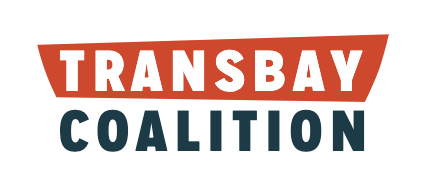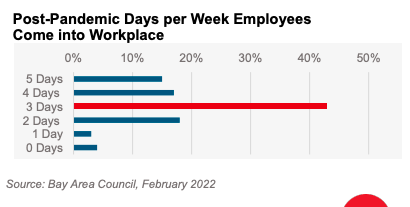At a board budget workshop on March 21, the Caltrain board will contemplate challenging years ahead with the prospect of changed post-pandemic travel patterns.
Business surveys predict that office workers will be commuting an average of three days per week, reducing Caltrain’s pre-pandemic ridership base.
Federal funding has kept transit afloat in the Bay Area and around the country. A recent slice of $38.8 million in federal funding will help enable a balanced budget in 2022, but deficits are projected starting in FY2024, even with the contribution of Measure RR to Caltrain’s budget.
The assumption of a balanced budget in 2022 includes $5 million in capital contributions from Caltrain’s member agencies. The assumptions of deficits in FY2025 and beyond includes planned service increases with electric service.
Caltrain’s projections are mirrored by BART which similarly faces slow ridership recovery and changed travel patterns.
Adjusting to a changed future
Regional services including Caltrain, BART and ferries are seeing weekend ridership recovering faster than weekday ridership, travel spread evenly throughout the day. Data from BART (see table below) and ferry services also show more people using transit for weekend travel.
How to adapt to the changing future? Raise fares? Attract new riders? Regional funding?
One of the options to raise revenues is to raise fares – Caltrain has deferred fare increases during the pandemic. However, other regional services are seeing new ridership from lower-income customers and students. Raising fares runs the risk of discouraging such new riders
To appeal to new riders, BART is partnering with entertainment businesses, parks, schools, and housing developments. At its board workshop discussing similar financial challenges, the BART board emphasized opportunities for better transit coordination to make service more convenient.
Regional funding opportunities
Before the pandemic, there was an initiative to pursue a large regional transit funding measure. Now, as part of the regional Transformation Action Plan approved by MTC and transit agency general managers, there is an initiative afoot for MTC to convene a public process for a regional transportation funding measure.
At BART’s board workshop in February, that agency talked about the opportunity for a regional measure as well, discussing potential options for the 9-county region, or a measure for the 5 counties served by BART (and Caltrain).
The MTC held a listening session about a regional transportation funding measure in December, but there have been no public steps since then. The BART board had mentioned June to December as the time frame for public outreach for a regional transportation measure.
The MTC and the Association of Bay Area Governments, which share staff and are also responsible for housing, are wrestling with options to fund public transportation and/or housing. A round of polling over the summer was not promising. It would be helpful for the public to know what the consequences would be without new public funding – and what the benefits would potentially be with more funding to run more service and improve the transit network.

